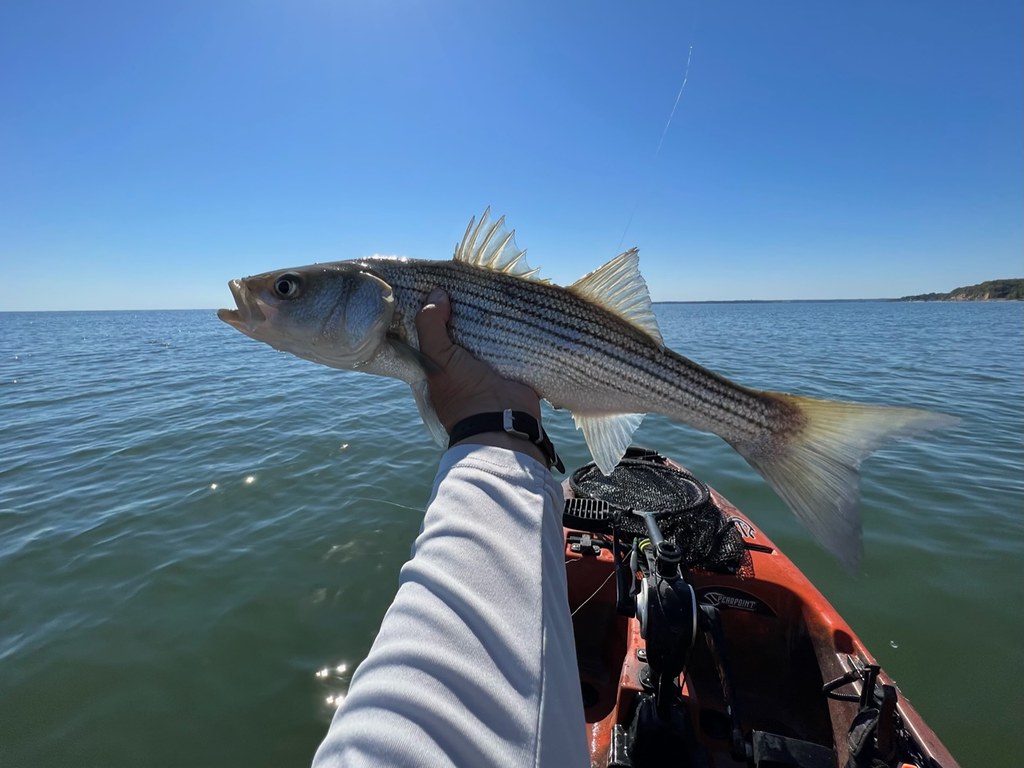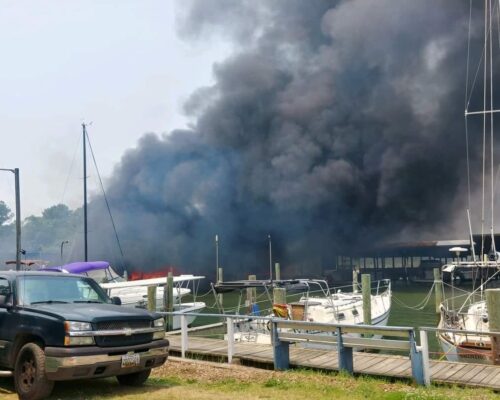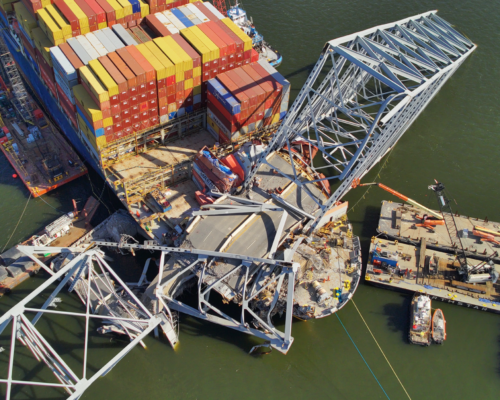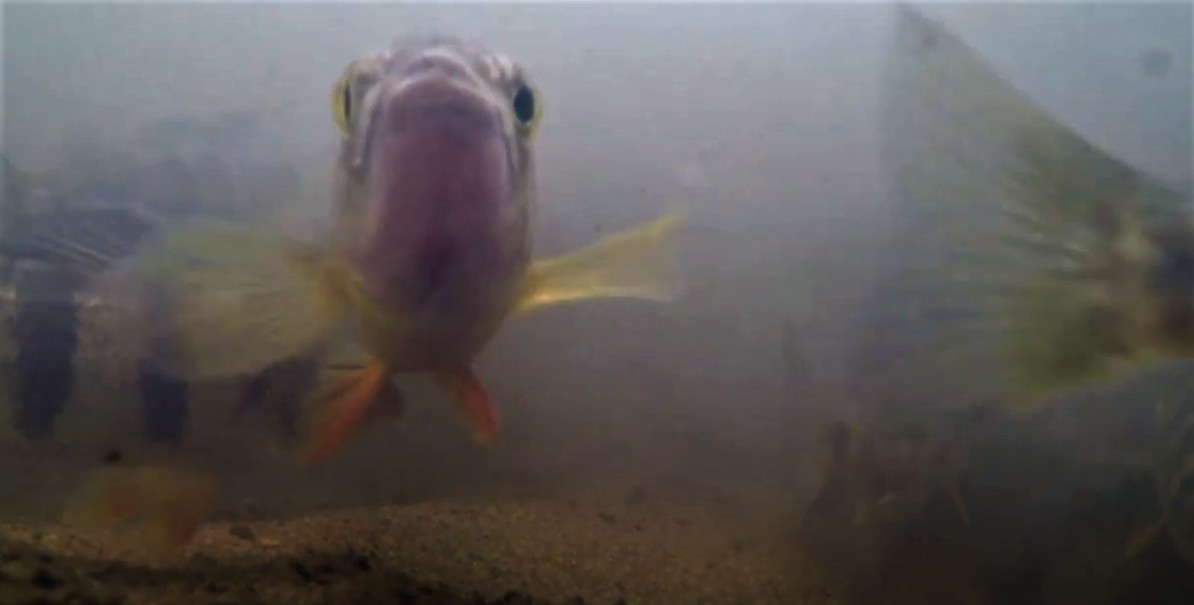While we are suffering through Excessive Heat Warnings and climbing temperatures in the Bay region this July, catch-and-release rockfish are suffering too.
That’s why the Maryland Department of Natural Resources (DNR) has closed the recreational striped bass fishery for the next two weeks, July 16 through July 31. All anglers and charter boat operators will have to stop fishing or target other species until August 1.
That’s because, biologists say, in the hottest part of summer, fish are more vulnerable to dying after they are caught and released. Fish that aren’t within the allowed size limit range have to be thrown back. And now that recreational anglers and charter guests are only allowed to keep one fish per person this season, catch and release fishing is more common. According to DNR , these hooked and released fish have a lower chance of survival during this hot and stressful time of year.
The midseason closure was first used in 2020. DNR numbers studying Chesapeake Bay rockfish mortality show that 21 percent are recreational dead discards, fish that didn’t survive being caught and thrown back.
In addition to the closure during the fish’s most vulnerable months, DNR developed the Striped Bass Summer Fishing Advisory Forecast, an awareness campaign that classifies each day’s conditions based on how dangerous they are for rockfish mortality: there are “red flag” advisory days, when anglers are encouraged not to fish for striped bass after 10 a.m. when it’s hottest. In better conditions, the advisories may be at a yellow or green flag status.
The recent heat waves have already triggered nearly a dozen red flag days this summer, DNR says.
DNR has introduced several management measures to protect the Bay’s stock of striped bass, a food-chain predator and beloved sport fish, and fulfill the management requirements set by coastwide fishery managers, the Atlantic States Marine Fisheries Commission (ASMFC).
Virginia has a spring recreational striped bass season and a fall season set by the Virginia Marine Resources Commission, as do the Potomac River tributaries via the Potomac River Fisheries Commission. This year, Maryland’s trophy rockfish season was canceled to further protect the fish.
Commercial striped bass fishing has had to implement a seven percent harvest reduction under ASMFC’s latest rules. But DNR researchers believe recreational fishing mortality (44 percent) is having a bigger impact on the rockfish population than commercial fishing (31 percent). The rate of dead discards for commercial sector (4 percent) is also much lower than dead discards in recreational fishing (21 percent).
While anglers are barred from rockfishing and charter boat operators see bookings slump during the closure, both are encouraged to target other species using other fishing methods for the next two weeks.
David Sikorski, executive director of the Coastal Conservation Association Maryland, suggests species like white perch, Spanish mackerel, bluefish, spot, and snakeheads, now known as Chesapeake Channa.
And most of all, anglers can target blue catfish, which are invasive to the Chesapeake and eat almost everything in their path. There are no bag or size limits for blue cat, and biologists say catching them helps improve the ecosystem in the Bay. The DNR website offers tips and methods for fishing blue catfish.
Sikorski tells us, “No one likes to be told they can’t go fishing, but it is important that we reduce pressure and mortality of striped bass given their recent lack of spawning success and the additional pressure that blue catfish are placing on future resources in the Bay.”
The Maryland Chesapeake Bay recreational fishery will reopen from August 1 through December 10. During the season, anglers may keep one striped bass per person, per day, with a minimum length of 19 inches and a maximum length of 24 inches.




